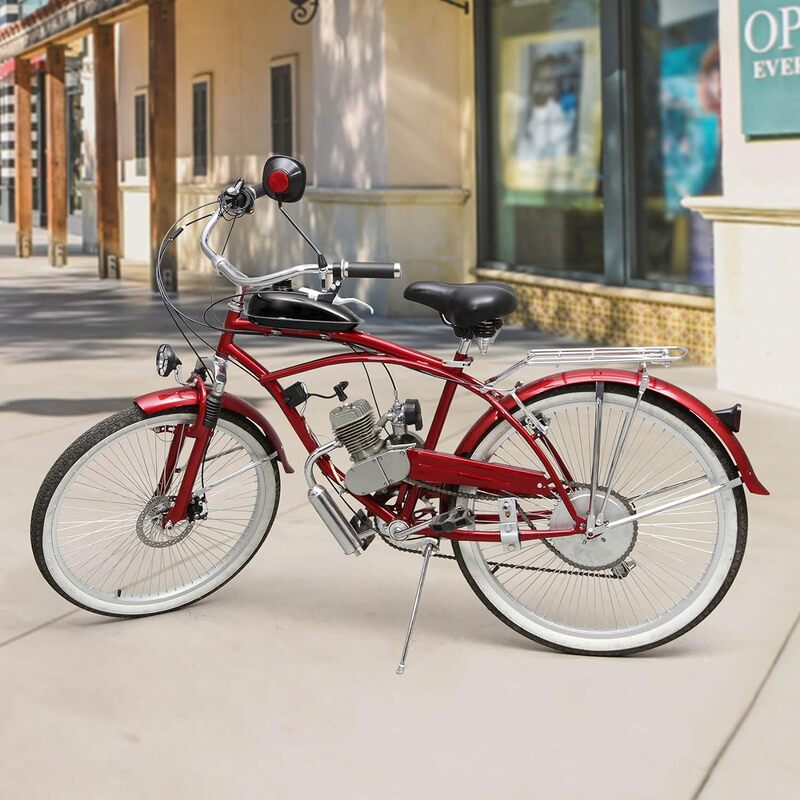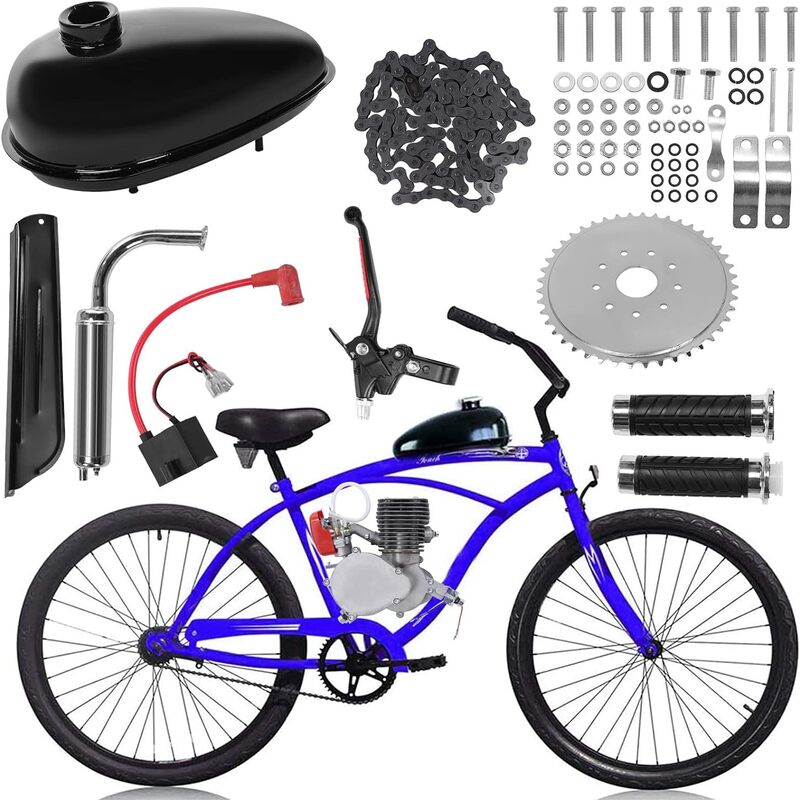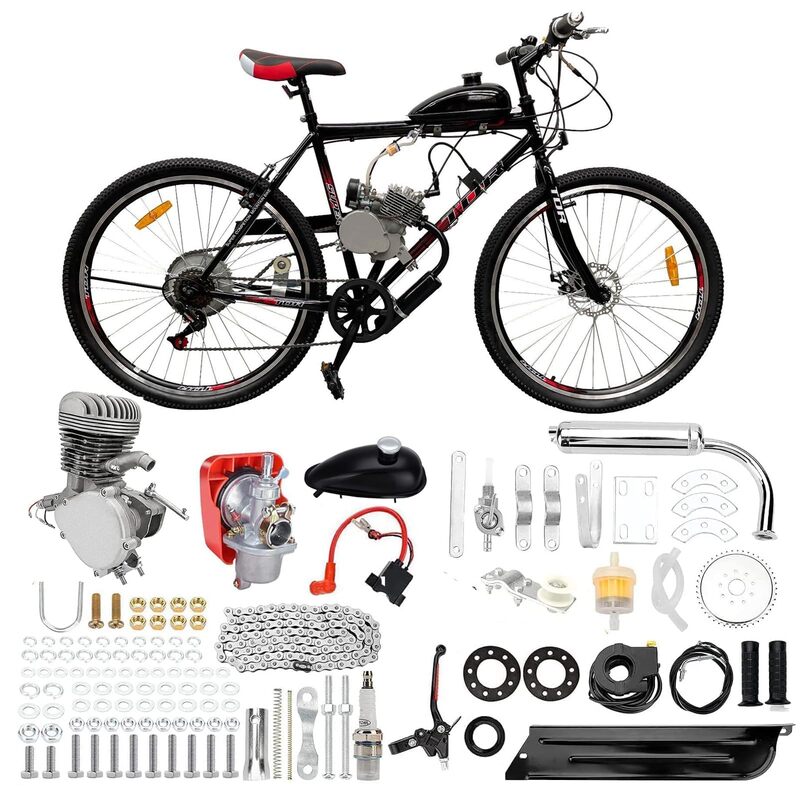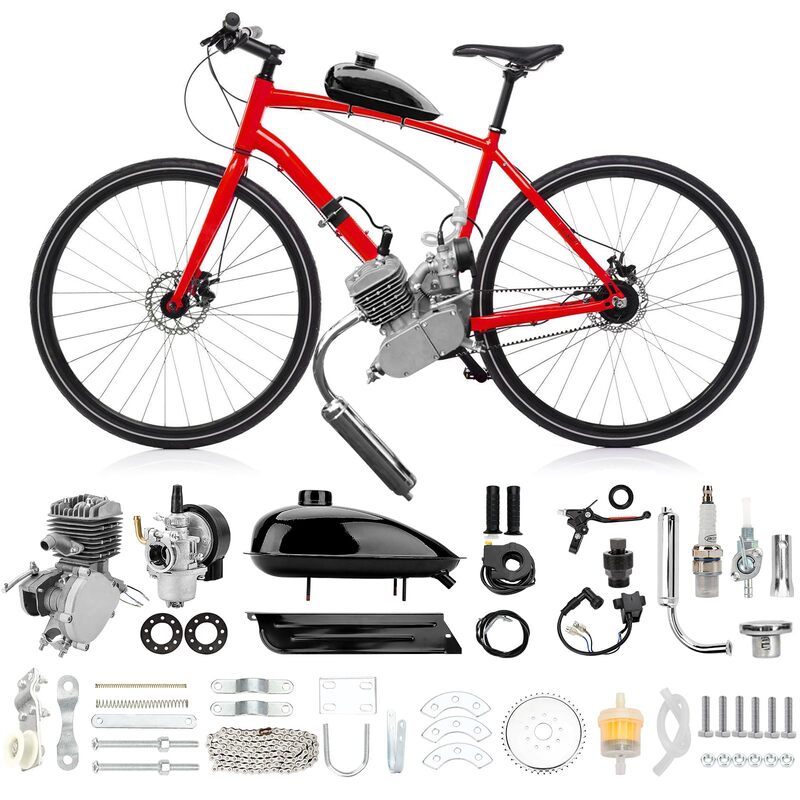Bicycles have long been celebrated for their eco-friendliness and simplicity. However, as technology continues to evolve, new alternatives are emerging. One of these innovations is the bicycle engine. These engines can enhance the cycling experience, making it more accessible and efficient. In this article, we’ll explore various aspects of bicycle engines. We’ll dive into their functioning, advantages, disadvantages, and future possibilities. Through this journey, readers can gain a comprehensive view of this fascinating subject.
The Basics of Bicycle Engines
What Is a Bicycle Engine?
A bicycle engine is a mechanical device that adds propulsion to a standard bike. It often assists the rider, especially during challenging terrains. While traditional bicycles rely solely on human power, engines can supplement that effort. Consequently, riding uphill or against strong winds becomes significantly easier. In essence, bicycle engines bridge the gap between complete human effort and powered transportation.
Bicycle engines typically come in various types. For instance, some are electric, while others are gas-powered. Each type offers unique benefits suited for distinct users. Electric engines are often quieter, emitting no harmful gases. On the other hand, gas engines can provide more power for recreational use. By understanding the types, potential users can make informed purchases, ensuring the engine meets their individual needs.
How Do Bicycle Engines Work?
Bicycle engines work by converting fuel or electricity into motion. In electric models, a battery powers the device. The battery stores energy that the engine uses to assist the rider. This means there is less physical strain on the cyclist. Riders often enjoy longer rides without the fatigue that accompanies continuous pedaling. In contrast, gas-powered engines rely on combustion. They burn fuel to produce energy, which drives the bicycle forward.
Additionally, many engines come with different assistance modes. Riders can choose how much help they want from the engine. This flexibility allows for tailored experiences. Casual riders may prefer low assistance, while serious cyclists might choose maximum power. Ultimately, this adaptability suits various skill levels and preferences. As a result, users can enjoy a customized experience that traditional bicycles cannot provide.

The Advantages of Bicycle Engines
Enhanced Performance and Accessibility
One of the most significant advantages of bicycle engines is enhanced performance. Riders can tackle steep hills or long distances with ease. Consequently, more individuals can enjoy cycling, regardless of fitness levels. This accessibility opens up cycling to a broader audience, including those with mobility challenges. Additionally, electric engines can be especially beneficial as they reduce strain on the rider’s joints and muscles.
Moreover, bicycle engines promote a sense of freedom. Individuals can venture further from home without the usual physical limitations. They can explore scenic routes that may have seemed daunting in the past. As a result, people are encouraged to engage in outdoor activities more often. Increased participation in cycling can lead to a healthier, more sustainable lifestyle, benefiting both individuals and communities.
Environmental Benefits
Bicycle engines, particularly electric ones, also contribute to environmental sustainability. As urban areas grow, so does traffic congestion. Subsequently, pollution levels rise, leading to numerous environmental issues. Incorporating bicycle engines into daily commuting can help alleviate these challenges. By choosing bicycles over cars, fewer greenhouse gases are emitted into the atmosphere. This shift positively impacts air quality and reduces overall pollution.
Furthermore, using bicycle engines promotes renewable energy sources. Many electric bicycle engines are now powered by sustainable energy methods. For example, solar charging stations facilitate eco-friendly energy use. Consequently, this makes electric bicycles a truly green mode of transportation. As more people adopt this practice, cities become cleaner and more environmentally aware, showcasing the power of innovation.
The Disadvantages of Bicycle Engines
Cost Considerations
Despite their numerous benefits, bicycle engines have downsides. One significant factor is cost. Electric engines can be particularly expensive. Many models range from a few hundred to several thousand dollars. This initial investment can deter potential users from transitioning to engine-powered bikes. Furthermore, maintenance costs can add up over time, especially for gas-powered engines requiring fuel and repairs.
Additionally, while electric models save money on fuel, they may require battery replacements. Over time, these costs can accumulate, making long-term ownership potentially more expensive than initially perceived. This economic consideration is essential for many potential users. Enthusiasts must weigh their options carefully to ascertain whether the benefits outweigh the costs.
Weight and Size Issues
Another disadvantage to consider is weight and size. Bicycle engines often add considerable weight to the bike. Traditional bicycles are lightweight and easy to maneuver. However, the addition of an engine can change this balance. Heavier bikes may not perform well on inclines or during quick turns. As a result, riding might become less enjoyable for skilled cyclists.
Moreover, the size of the engine can vary. A larger engine may take up more space, making parking or storage a challenge. This is especially pertinent in crowded urban environments. Cyclists must consider these factors when purchasing a bicycle engine. Ultimately, understanding the mechanical characteristics will aid in making informed decisions.

Choosing the Right Bicycle Engine
Determining Your Cycling Needs
To choose the right bicycle engine, understanding your cycling needs is essential. First, consider how often you plan to ride. If cycling becomes a daily activity, investing in a quality engine is wise. Conversely, occasional riders may opt for budget-friendly models. Assessing your routine and intentions sets the foundation for an informed selection.
Additionally, consider the types of terrain you’ll encounter. If you frequently ride on steep hills or off-road trails, a more powerful engine may be necessary. In contrast, casual city riding may only require a basic model. Therefore, potential users must evaluate their circumstances to ensure the best fit for their lifestyle.
Researching Available Models
After determining your requirements, extensive research is critical. Numerous manufacturers exist, each offering various models. Investigate each option thoroughly, comparing specifications and user reviews. Pay close attention to the motor’s power, battery life, and available features. This evaluation will help pinpoint the model that aligns best with your needs.
Additionally, consider local dealerships and service centers. Having a reliable service option nearby can ease concerns about maintenance and repairs. Visit local stores to get a feel for models and discuss options with knowledgeable staff. An informed purchase decision can significantly enhance your overall experience with a bicycle engine.

The Future of Bicycle Engines
Innovations on the Horizon
The future of bicycle engines looks promising. With rapid advancements in technology, the potential for innovation is vast. Engineers are focusing on improving battery life, reducing weight, and enhancing efficiency. Consequently, electric bicycle engines will likely become more accessible and dependable. These innovations can increase the popularity of bicycle engines among various demographics.
Additionally, the rise of smart technology will likely affect bicycle engines. Features like GPS navigation, real-time analytics, and integrated safety systems may soon become commonplace. This push for connectivity will enhance user experience, fostering a deeper connection with the device. Ultimately, these advancements will encourage more individuals to embrace cycling with powered assistance.
A Shift in Urban Mobility
Bicycle engines are reshaping urban mobility dynamics. As cities strive to reduce congestion and pollution, they seek eco-friendly alternatives. Bicycle engines can play a pivotal role in this transition. By substituting cars for bicycles, commuters can navigate cities efficiently and sustainably. Many urban planners are considering infrastructure that accommodates this shift.
Moreover, the accessibility of bicycle engines will inspire more individuals to consider cycling as a primary transportation mode. In turn, this behavior change could lead to more bicycle lanes, safer routes, and infrastructure upgrades. Consequently, cities will promote healthier lifestyles and a greener environment. The possibilities are numerous as urban areas evolve to meet the needs of modern commuters.
Conclusion: Embracing the Bicycle Engine Revolution
In conclusion, bicycle engines represent an exciting fusion of technology and cycling. From enhancing performance to contributing to environmental sustainability, their benefits are numerous. While challenges such as cost and weight exist, they can be addressed with careful consideration. Potential users must determine their unique cycling needs and conduct thorough research before choosing an engine.
The future of bicycle engines holds much promise. As technological advancements continue, users can expect even better performance, affordability, and integration within urban environments. With the proper understanding and foresight, bicycle engines can revolutionize how people perceive and engage with cycling. Embracing this innovation opens the door to healthier, more sustainable lifestyles. Ultimately, bicycle engines stand poised to transform the cycling landscape for years to come.


